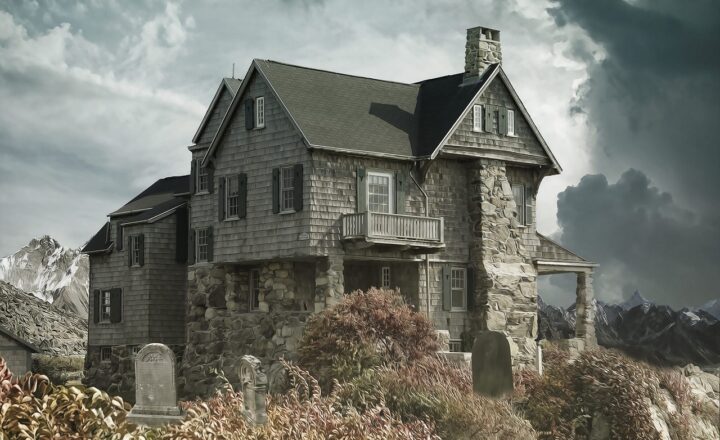
The American West is steeped in tales of adventure, opportunity, and often, the specter of abandonment. Each ghost town tells its own story of prosperity turned desolation, of bustling streets that once echoed with the laughter and toil of prospectors, settlers, and merchants. These living remnants of the past serve as haunting reminders of a different time, inviting us to explore their history and the complexities of their decline.
1. What Are Ghost Towns?
Ghost towns are typically abandoned towns or settlements, often characterized by empty buildings and crumbling infrastructure. While the reasons for their abandonment vary, they often stem from economic decline, natural disasters, or changes in transportation routes. The American West is particularly rich in ghost towns due to the Gold Rush and subsequent mining booms, which attracted thousands to remote areas, only for them to abandon these settlements once resources were depleted or economic conditions altered.
Examples include famous towns like Bodie, California, and Virginia City, Nevada, both of which saw rapid growth during their heyday but eventually faded into obscurity. What remains today often includes remnants of architecture that reflect the period’s unique styles and the stories of those who lived there.
2. The Allure of Ghost Towns
The allure of ghost towns lies in their aura of mystery and nostalgia. They provide a unique lens through which to view American history, revealing the hopes and dreams of those who sought fortune in an unpredictable land. Visitors to ghost towns often feel a sense of connection to the past, imagining life during the peak of these towns’ economies.
As they wander through skeletal remains of buildings, they can almost hear the echoes of conversations from another era. Notably, many ghost towns are situated in breathtaking landscapes, surrounded by mountains, deserts, or open plains, further enhancing their appeal as travel destinations.
3. Notable Ghost Towns of the American West
While there are numerous ghost towns across the American West, a few stand out for their unique history, preservation, and visitor experience:
Bodie, California
Founded in 1859, Bodie was once a thriving gold mining town with a population of around 10,000 at its peak. Today, it is a California State Historic Park, and about 110 buildings remain, preserved in a state of “arrested decay” to reflect how the town looked in the late 1800s. Visitors can explore the town and learn about the colorful characters who shaped its history, including the famous lawman Wild Bill Hickok.
Virginia City, Nevada
Virginia City was the site of one of the richest silver mines in America, the Comstock Lode. Founded in 1859, the town boasted a thriving community with saloons, theaters, and its own Mint. While it is partially restored and still welcomes tourists today, remnants of its once bustling streets and the rich history associated with the mining boom linger.
Jerome, Arizona
Once a booming copper mining town, Jerome’s population swelled from a few hundred to over 15,000 in the 1920s. It was considered the “wickedest town in the West” due to its crime and vice. Today, Jerome is a vibrant arts community, but it still has numerous ghost town remnants, including abandoned buildings and relics from its mining past that draw tourists interested in ghost stories and history alike.
4. The Role of Preservation
Preserving ghost towns serves several purposes: it maintains a connection to the past, educates future generations, and fosters tourism. Various organizations, including the National Trust for Historic Preservation, work to maintain and promote these sites, often collaborating with local communities to revive interest and support for restoration efforts.
Beyond physical preservation, ghost towns also serve as cultural artifacts that tell the stories of diverse populations. Many ghost towns have ties to Indigenous communities, immigrant groups, and marginalized populations whose stories are essential to understanding the broader history of the West. As such, preservation efforts often focus on including these narratives, ensuring a more equitable representation of history.
5. The Haunted Histories of Ghost Towns
With their rich histories and often tragic ends, many ghost towns are steeped in ghost stories and legends. Tales of hauntings and paranormal encounters abound, adding an extra layer of intrigue for visitors.
Locations like the Old Washoe Club in Virginia City are famous for their reported hauntings, where visitors claim to have seen apparitions or heard sounds from the past. Bodie, too, has its share of ghost stories, with residents claiming to see figures moving through the abandoned streets after dark.
These ghost stories contribute to the towns’ identities and attract those intrigued by the supernatural. Ghost tours often form part of the visitor experience, allowing attendees to engage with these accounts while learning about the history that birthed them.
6. Conclusion
Ghost towns represent more than mere relics of the past; they embody the spirit of adventure and the volatility of fortune. As we explore these haunting remnants of American history, we are invited to reflect on the dreams and struggles of those who came before us. The stories woven into the fabric of these abandoned places remind us of the resilience of the human spirit and the ever-changing narrative of our culture.
As visitors wander the quiet streets of Bodie, Virginia City, or Jerome, they are not just exploring abandoned buildings—they are connecting with the vibrant history of the American West, allowing its ghosts to live on through their tales and experiences. These towns, once filled with life and ambition, now stand as a poignant reminder of time, change, and the ghosts that join us along the way.







